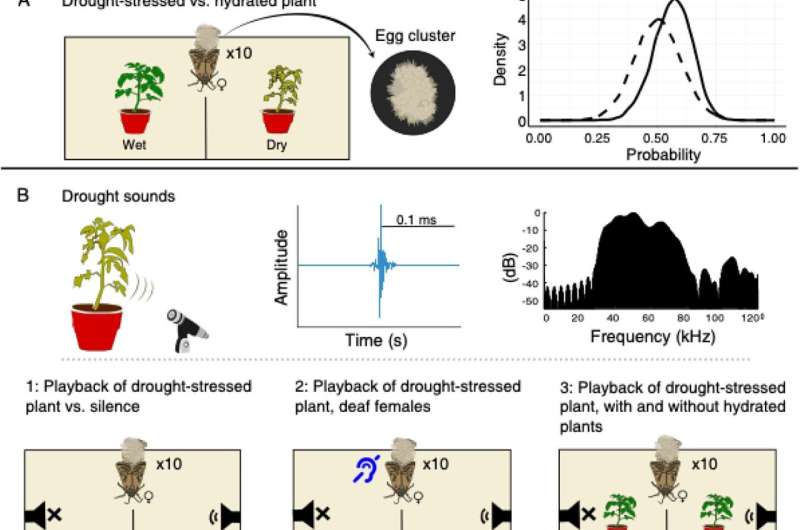
A pioneering study from Tel Aviv University has unveiled the first scientific evidence of an acoustic interaction between plants and insects. Researchers found that female moths make crucial decisions about where to lay their eggs based on sounds emitted by nearby plants. When plants emit distress signals, the moths tend to favor healthier plants that are silent.
This study focused on female moths and their responses to ultrasonic sounds, which are beyond the human hearing range but detectable by insects. Led by students Dr. Rya Seltzer and Guy Zer Eshel, the research involved collaboration with scientists from the Plant Protection Institute at the Volcani Institute and was conducted under the guidance of Professors Yossi Yovel and Lilach Hadany. The findings were published in the journal eLife.
The research builds on a significant discovery made about two years ago, where the same team revealed that stressed plants emit sounds at ultrasonic frequencies. This prior work sparked interest in the potential for acoustic communication between flora and fauna. As Prof. Yovel explained, the team hypothesized that animals capable of hearing these high-frequency sounds might respond to them in their decision-making processes.
Prof. Hadany highlighted the importance of the study, noting that female moths typically lay their eggs on plants that can nourish their larvae once hatched. The researchers aimed to determine if the moths would avoid laying eggs on plants that signaled stress through sound.
To investigate this, the team conducted several controlled experiments. In the first experiment, female moths were presented with two boxes: one with a speaker playing recordings of dehydrated tomato plants and another that was silent. The moths demonstrated a clear preference for the box with the sounds, indicating they perceived it as a living plant, even under stress.
When the researchers neutralized the moths’ hearing organs, the preference for the “noisy” box disappeared, providing clear evidence that the choice was indeed based on auditory cues rather than other factors.
In a subsequent experiment, the females were again presented with two healthy tomato plants—one emitting distress sounds and the other silent. This time, the moths favored the silent plant, suggesting that they actively avoid laying eggs on plants that show signs of dehydration.
In an additional experiment involving male moths, which also produce ultrasonic sounds, the females laid their eggs equally on both boxes, indicating that their decisions were specifically influenced by the sounds emitted by plants.
The researchers concluded, “This study provides the first evidence for acoustic interaction between a plant and an insect.” They emphasized that this discovery opens up a vast field of unexplored interactions between plants and animals, suggesting many more forms of communication await investigation.
The implications of this research extend beyond academic interest, potentially influencing agricultural practices and pest management strategies in the future. As the understanding of plant-animal communication grows, it may lead to innovative methods of ensuring crop health and sustainability.
For further details, see: Rya Seltzer et al, “Female Moths Incorporate Plant Acoustic Emissions into Their Oviposition Decision-Making Process,” eLife (2024). DOI: 10.7554/eLife.104700.1.







